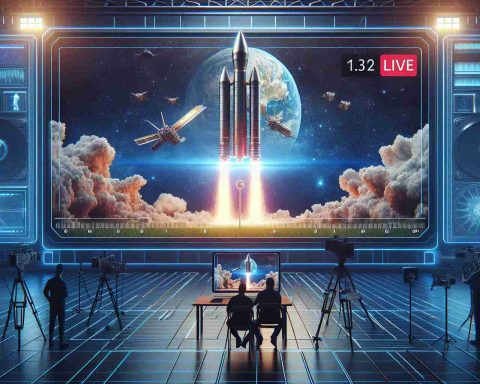New Jersey’s Drone Dilemma: Innovation vs. Regulation
As New Jersey navigates the skyward surge of drone technology, it’s setting the stage for revolutionary changes in farming and public safety, all while wrestling with the inevitable regulatory hurdles. This intersection of technology and legislation offers a keen look into how modern states juggle advancement with oversight.
Transforming Agriculture with Precision
In New Jersey, drones are transforming traditional agriculture into smart farming pilots. Farmers now harness UAVs for real-time data on crop health, soil conditions, and water management, optimizing yield and efficiency. This shift not only promises enhanced productivity but also represents a pivotal step toward sustainable farming practices. Industries, too, are capitalizing on drones for precise and remote infrastructure inspections, drastically cutting down on traditional operational costs and risks.
Regulatory Challenges: A Balancing Act
The rapid integration of drones into everyday life presents pressing challenges for state regulators. New Jersey’s legislative bodies are meticulously crafting policies aimed at ensuring both safety and innovation. Developing no-fly zones and setting air traffic guidelines, especially for sensitive areas, are critical to preventing privacy violations and potential accidents.
Public Concerns and the Path Forward
Despite these technological strides, community voices in New Jersey raise valid privacy and noise concerns. The push for robust regulations is paramount to ensuring drones do not become unwelcome invaders but rather valuable assets to society. As the state forges ahead, striking a balance between embracing innovation and maintaining public trust remains vital.
As we glimpse the future, New Jersey’s journey in drone integration highlights the intricate dance between cutting-edge technology and the societal norms that must adapt alongside it.
The Environmental and Societal Impacts of Drone Technology: A New Jersey Case Study
The burgeoning drone technology in New Jersey is not just reshaping the state’s agricultural landscape but also prompting significant reflections on the broader environmental and societal impacts. As the state’s farmers and industries embrace Unmanned Aerial Vehicles (UAVs), the potential for more sustainable agricultural practices becomes increasingly apparent. Meanwhile, the accompanying regulatory challenges underscore a universal tension between technological progress and societal adaptation.
Environmental Benefits and Considerations
At the forefront of drone technology in agriculture is the promise of sustainability. By utilizing UAVs, farmers gain precise insights into crop health and soil conditions, fostering a shift towards data-driven farming. This precision agriculture can significantly reduce resource waste. For instance, targeted spraying minimizes pesticide use, which in turn reduces the environmental footprint associated with traditional farming methods. More efficient water management via drones can conserve a vital resource, reducing water waste and mitigating the environmental impacts of over-irrigation.
Moreover, the use of drones for infrastructure inspections minimizes the need for fuel-powered vehicles and heavy machinery, reducing emissions and conserving energy. These UAVs also offer a less intrusive means of wildlife monitoring and environmental assessments, promoting biodiversity conservation.
Societal and Humanistic Impacts
As drones become an integral part of New Jersey’s landscape, they also pose questions about privacy, noise, and the need for public trust. The legislative response to these issues is vital, exemplifying how societies can harness technological benefits while safeguarding individual rights. New Jersey’s approach to balancing innovation with public concern is indicative of a future where technology must align with human values and community needs.
The intelligent deployment and regulation of drones can transform them from mere technological novelties into instruments of societal good. By addressing public concerns around privacy and noise, governments can ensure that drones serve the community’s interests, enhancing public safety and emergency response capabilities without infringing on individual freedoms.
Economic Implications and Future Outlook
Economically, the integration of drones into agriculture and various industries presents significant potential for cost savings and productivity boosts. The reduction in operational risks and the increase in efficiency can enhance competitiveness and innovation within the state’s economy. This technological shift foreshadows an economic landscape where traditional industries become revitalized through tech-driven solutions.
Looking forward, the lessons from New Jersey’s drone dilemma will resonate globally. As states contemplate similar technological integrations, the outcomes will heavily depend on their ability to craft frameworks that embrace innovation while preserving ecological and social integrity. The future of humanity, increasingly intertwined with technological advancements, will rely on striking a harmonious coexistence with the natural world and societal structures.
In essence, New Jersey’s experience with drones is not merely about local progress but serves as a microcosm for global challenges and opportunities. As humanity advances further into the drone era, the path forged in New Jersey could illuminate the way for others navigating the intricate junction of technology, environment, and society.
New Jersey’s Drone Transformation: Emerging Trends and Future Predictions
Expanding Use Cases for Drones in New Jersey
In recent years, the role of drones in New Jersey has expanded beyond agriculture and public safety. Drones are increasingly being used in sectors such as environmental monitoring, construction, and entertainment. In environmental applications, drones are used for tracking wildlife patterns and assessing the health of ecosystems, offering a less invasive method of study. Construction companies use drones to conduct aerial surveys and site inspections, improving project planning and execution efficiency. The entertainment industry has also embraced drones for dynamic filming and live event coverage, providing audiences with unique perspectives.
Innovations in Drone Technology
The innovation in drone technology in New Jersey is driven by advancements in artificial intelligence and machine learning. AI-powered drones can now perform complex tasks autonomously, such as real-time data analysis and adaptive decision-making. Enhanced sensor technology allows drones to collect detailed environmental data, opening new avenues for research and commercial applications. These continuous innovations promise more versatile and efficient drones, potentially reshaping the blueprint of urban planning and logistics.
Security and Privacy Considerations
As drones become more prevalent, security and privacy are at the forefront of discussions. New Jersey is exploring advanced encryption technologies to secure data collected by drones and prevent unauthorized access. The implementation of secure communication protocols helps mitigate the risk of hacking, ensuring sensitive information is protected. Additionally, there is an ongoing effort to educate operators about responsible drone usage, promoting privacy-conscious practices to ease public concerns.
Sustainability and Environmental Impact
Drones offer sustainable advantages, particularly in reducing carbon footprints associated with traditional methods of data collection and transportation. Their ability to operate on renewable energy sources, such as solar power, makes drones an environmentally friendly alternative. The efficient routing and reduced need for heavy machinery contribute to decreased emissions and resource consumption.
Predictions for the Future of Drones in New Jersey
Looking ahead, the integration of drones in New Jersey is expected to intensify, with projections indicating a rise in commercial and governmental drone deployments. Autonomous delivery drones could become commonplace, transforming logistics and supply chain operations. The state’s infrastructure is anticipated to evolve, supporting the widespread adoption of drones with designated drone lanes and charging stations. Collaborative efforts between industries and regulatory bodies will be key to fostering a conducive environment for these predictions to become reality.
For more information on the latest advancements and regulatory updates, you can visit [link name](https://www.nj.gov).



















